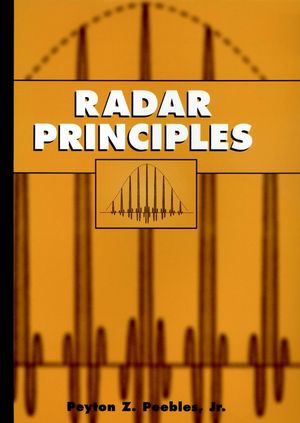Radar PrinciplesISBN: 978-0-471-25205-4
Hardcover
794 pages
September 1998
 This is a Print-on-Demand title. It will be printed specifically to fill your order. Please allow an additional 10-15 days delivery time. The book is not returnable.
|
||||||
A comprehensive introduction to radar principles
This volume fills a need in industry and universities for a comprehensive introductory text on radar principles. Well-organized and pedagogically driven, this book focuses on basic and optimum methods of realizing radar operations, covers modern applications, and provides a detailed, sophisticated mathematical treatment. Author Peyton Z. Peebles, Jr., draws on an extensive review of existing radar literature to present a selection of the most fundamental topics. He clearly explains general principles, such as wave propagation and signal theory, before advancing to more complex topics involving aspects of measurement and tracking. The last chapter provides a self-contained treatment of digital signal processing, which can be explored independently. Ample teaching and self-study help is incorporated throughout, including:
* Numerous worked-out examples illustrating radar theory
* Many end-of-chapter problems
* Hundreds of illustrations, including system block diagrams, demonstrating how radar functions are achieved
* Appended review material and useful mathematical formulas
* An extensive bibliography and references.
This volume fills a need in industry and universities for a comprehensive introductory text on radar principles. Well-organized and pedagogically driven, this book focuses on basic and optimum methods of realizing radar operations, covers modern applications, and provides a detailed, sophisticated mathematical treatment. Author Peyton Z. Peebles, Jr., draws on an extensive review of existing radar literature to present a selection of the most fundamental topics. He clearly explains general principles, such as wave propagation and signal theory, before advancing to more complex topics involving aspects of measurement and tracking. The last chapter provides a self-contained treatment of digital signal processing, which can be explored independently. Ample teaching and self-study help is incorporated throughout, including:
* Numerous worked-out examples illustrating radar theory
* Many end-of-chapter problems
* Hundreds of illustrations, including system block diagrams, demonstrating how radar functions are achieved
* Appended review material and useful mathematical formulas
* An extensive bibliography and references.
*An Instructor's Manual presenting detailed solutions to all the
problems in the book is available from the Wiley editorial
department.
Radar Principles is destined to become the standard text on radar
for graduate and senior-level courses in electrical engineering
departments as well as industrial courses. It is also an excellent
reference for engineers who are typically required to learn radar
principles on the job, and for anyone working in radar-related
industries as well as in aerospace and naval research.



